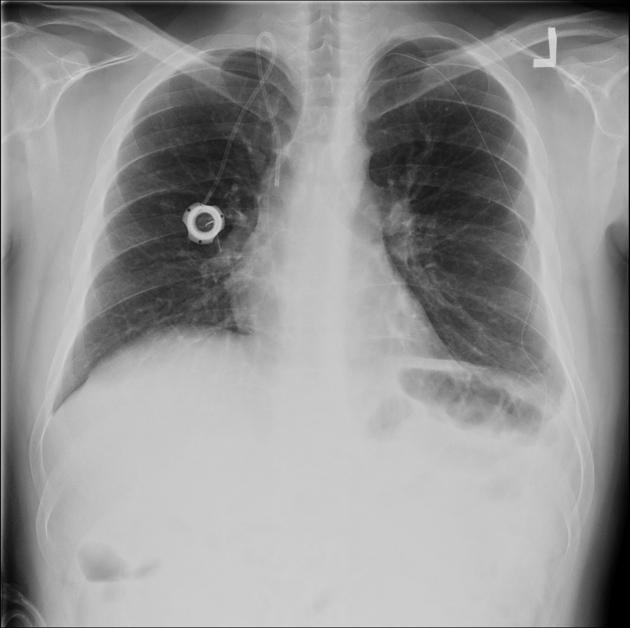A Denver shunt, or peritoneovenous shunt, is a device used to shunt ascites to the superior vena cava in patients with refractory ascites.
The proximal end is located in the peritoneal cavity and the distal end in the superior vena cava, with a subcutaneous course in the anterior chest wall. It has a one-way valve and a compressible chamber, which must be compressed several times a day to ensure proper flow.
Contraindications
Contraindications to the procedure include 1:
- end-stage renal failure requiring dialysis
- sepsis
- uncorrectable coagulopathy
- morbid obesity
- septation of the peritoneal cavity due to previous infection or surgery
Complications
Recognised complications include 1:
- shunt occlusion
- peritoneal infection
- ascitic leak
- bleeding
- pulmonary oedema
- disseminated intravascular coagulation
- pneumothorax
- pneumoperitoneum





 Unable to process the form. Check for errors and try again.
Unable to process the form. Check for errors and try again.